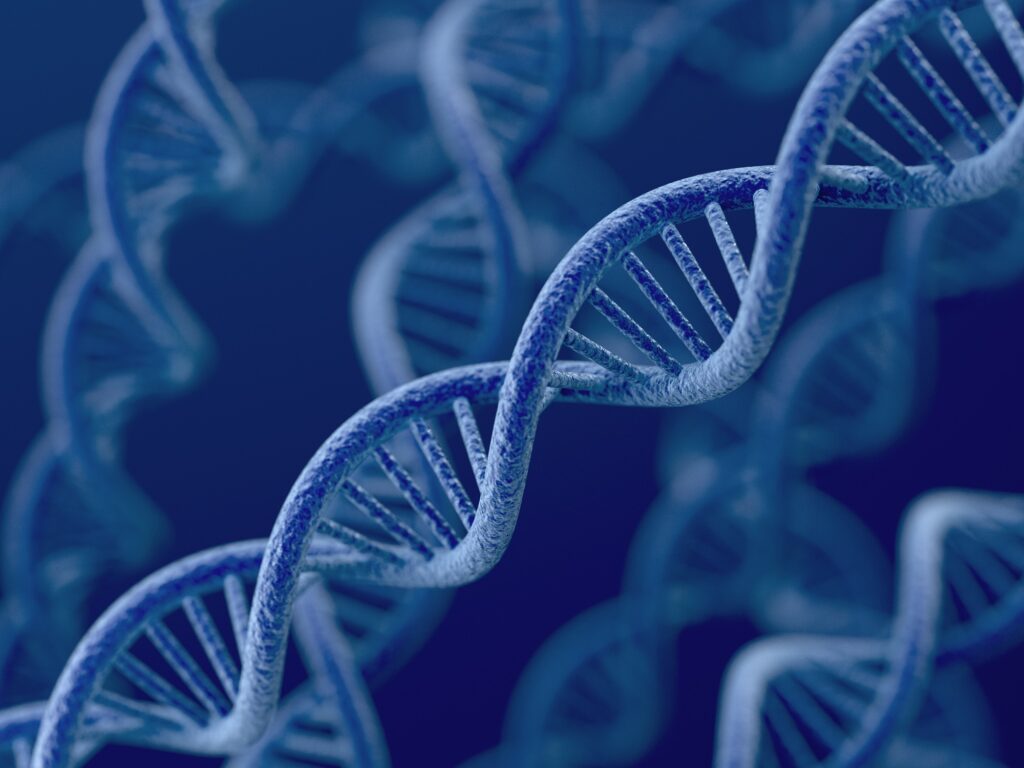Unraveling of genetic mechanism behind tumor formation may improve targeted treatment for cancer patients

Genetic alterations in the FGFR2 gene occur in various cancer types and represent a promising target for therapies. However, clinical responses to available therapies remained variable and unpredictable, making it difficult to select patients who would benefit from these types of treatments. An international team of researchers led by Jos Jonkers, group leader at the Netherlands Cancer Institute and Oncode Investigator, has now elucidated the mechanism behind this variation in treatment response.
Their research – published today in Nature – offers new opportunities to improve diagnostics and targeted therapy for many cancer patients. The results highlight the importance of studying the functional consequences of genetic changes in tumors.
In various types of cancers – including bile duct cancer, stomach cancer and breast cancer – copy number alterations and fusions in the Fibroblast Growth Factor Receptor 2 (FGFR2) gene are relatively common. But just how these genetic variations contribute to the formation of tumors was unclear. Besides this, targeting FGFR2 with therapies brought variable and unpredictable results. But now the team led by Oncode Investigator Jos Jonkers took a data driven approach to solve this puzzle presented by FGFR2.
Incomplete protein
“The story of our new findings began over a decade ago”, says Jonkers who is a group leader at the Netherlands Cancer Institute. “By using a mouse model in which we could induce genetic alterations in a controlled manner, we observed a specific variation in the last part of the FGFR2 gene leading to the presence of an incomplete FGFR2 protein. Follow up mouse experiments then showed that this truncated form of FGFR2 leads to the formation of tumors.”
In parallel, the team started looking for evidence of the presence of this truncated form of FGFR2 in human cancer samples. With the datasets available at the Hartwig Medical Foundation and Foundation Medicine, they uncovered that many of the known alterations in the FGFR2 gene lead to the expression of the truncated protein.
“We found data confirming our model at the genetic level, but also at the gene expression level”, postdoctoral fellow and first author Daniel Zingg explains. “Existing diagnostic approaches usually focus on the increased amounts of the protein in tumor samples. What we uncovered now is that it is not the amount of FGFR2 what is causing cells to become cancerous, but the expression of the truncated form. Tumor formation is not caused by more of the normal protein, but by a little bit of the truncated protein.”
Clinical impact
To determine the clinical relevance of their findings, the team interrogated data from preclinical and clinical trials with FGFR inhibitors from biopharmaceutical companies Debiopharm and Incyte, respectively. “We knew that our preclinical findings had the potential to change clinical practice”, says Jonkers. “Looking into clinical trial data revealed that a good response to treatment correlates with the presence of the truncated form of FGFR2. This means that we now have a perfect way to identify which patients can benefit from treatments targeting FGFR2.” The results should still be confirmed in a prospective clinical trial, but the team is very hopeful that their work can help to improve the clinical practice.
The results published in Nature showcase the importance of collaboration as well as a data driven approach. The team of Jos Jonkers collaborated with other Oncode Investigators, colleagues at the NKI, Amsterdam UMC, Hartwig Medical Foundation, genomic profiling company Foundation Medicine, biopharmaceutical companies Incyte and Debiopharm and Rutgers Cancer Institute of New Jersey. “These findings, which go from mouse models into cancer genomics and human clinical trial data, will lay the groundwork for development of clinical trials aimed at rationally increasing the number of patients who will benefit from FGFR inhibitor therapy,” says Shridar Ganesan, MD, PhD, chief of molecular oncology and associate director for translational research at Rutgers Cancer Institute and co-senior author of the work. “This work also demonstrates the growing power of using clinical tumor sequencing data and sophisticated pre-clinical models to tackle basic questions in tumorigenesis and guide development of targeted therapeutics.”
“It’s great that through our Oncode base funding and a broad collaborative effort, we could bring this basic and data driven project towards the point where we can have a clinical impact. From a scientific perspective, our work highlights the importance of the functional analysis of mutations we find in cancer. This will allow us to better interpret the ever-growing set of genetic data from tumors, and advance our understanding of cancer biology”, Jonkers concludes.
You read an article in the category Personalized treatment. You may also be interested in Biomarker, DNA, Hartwig Medical Database, Learning healthcare system, Molecular diagnostics, Research or Scientific publications.All news
Also read

Patients can benefit from whole genome sequencing for immunotherapy
Immunotherapy is an effective treatment for many people with cancer. The number of abnormalities in the DNA of the tumor in …

GenomeWeb: ‘Dutch Team Looks to Drug Repurposing to Improve Patient Outcomes, Lower Costs’
The project is an attempt to address the rising healthcare costs associated with new cancer drugs and to identify biomarkers …

Catalog makes Hartwig Medical Database easily searchable
Hartwig Medical Foundation maintains a catalog of the Hartwig Medical Database with whole-genome data on full tumor genomes: https://catalog.hartwigmedicalfoundation.nl. The …

We want to extract the maximum amount of information from the patient’s tumor. This DNA test is the The complete DNA test is the best available tool to extract the maximum amount of information from the patient’s tumor. We only need one tissue sample with sufficient tumor cells. We literally analyze the entire genome, including parts of the DNA that show mutations of which we don’t yet know the importance. This test is tumor-independent and future-proof. These are the two most important advantages of WGS.